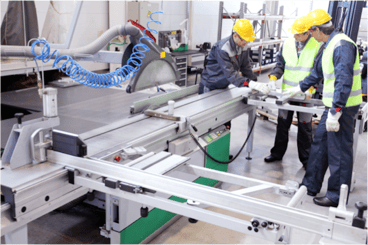Are We Operating Effectively? 4 Metrics to Track Operational Efficiency
 No matter your manufacturing goals, every company should have a set of key performance indicators (KPIs) that are used for measurement, benchmarking, and tracking success.
No matter your manufacturing goals, every company should have a set of key performance indicators (KPIs) that are used for measurement, benchmarking, and tracking success.
Determining the right manufacturing KPIs for your company helps establish goals that are tracked and monitored over a course of time—weekly, monthly, quarterly, and annually.
One of the most important metrics to track to gauge operational success is efficiency. Manufacturers know operational efficiency equals more production, better allocated resources, happier customers, and more profits.
Unsure how to start measuring your plant’s operational efficiency? Here are 4 KPIs to help you get started.
1. Machine Downtime
To begin tracking efficiency across your operations, begin with the lifeblood of your manufacturing plant—the machines. Specifically, track unplanned downtime as a topline KPI.
According to downtime consultants, the majority of manufacturers face a 5% loss in efficiency due to downtime—but it can be as high as 20%.
Unexpected downtime causes serious hiccups for operational efficiency. If one area of the production line is backed up due to an unusable asset, full production may come to a screeching halt—resulting in increased costs, missed customer deadlines, and lags in efficiency.
To avoid losing profits and delaying production, monitor equipment regularly with preventative and predictive maintenance. Consider utilizing a computerized maintenance management system (CMMS) to schedule maintenance activities in advance.
Additionally, the ramifications of unplanned downtime are decreased with an environment that welcomes open employee communication. When employees know exactly who to communicate downtime-related issues to and when, they’re able to relay issues faster, lowering risks and increasing productivity.
>>>Related Resource: Discover how to break down information silos between departments.
2. Capacity Utilization
If a machine is not running at 100% output capacity—meaning that it could be producing more products at a higher rate—there is an opportunity to scale production and increase efficiencies.
To measure machine capacity, track capacity utilization as a KPI, which is measured by observing how much of the total manufacturing output capacity your plant uses. If a machine begins to run slower, your capacity utilization percentage and overall operational efficiency will drop.
Avoid falling behind by keeping detailed service records and updating your existing machinery as needed. When was the last time you replaced significant parts of your machinery? It may be time to repair, rebuild, or replace if your machines aren’t producing at (or close to) 100% capacity utilization.
3. On-Time Delivery
Manufacturers must be mindful of the time it takes to produce and deliver products to customers or distributors. If a certain timeline was established with an end-user, it’s up to the manufacturer to efficiently produce that product to meet deadlines and keep customer satisfaction up.
A helpful KPI to measure the efficiency of your production schedule compared to customer demand is on-time delivery (OTD). OTD measures the amount of finished goods or services delivered to a customer on time and complete.
OTD also helps manufacturers identify areas of inefficiency and bottlenecks within the production line, whether it is a lagging machine, employee, or process. The result? Improved operational efficiency across production and fulfilled, happy customers.
4. Yield
Although manufacturers generally think of total yield as a measure of quality, it also has a major impact on operational efficiency. This KPI indicates the percentage of products that are manufactured correctly the first time through the production process.
How does this directly affect efficiencies? If a product was produced with any defective parts, the entire product may require substantive rework, which inevitably affects total cycle times within production. A manufacturing company should aim for 100% yield to avoid rework and scrap, as both of these outcomes will negatively impact daily efficiencies.
Develop early- and late-stage strategies for reducing defects. For example, you may consider prototyping new products or product advancements to identify and fix defects before advancing in the production process.
Is Operational Efficiency An Area of Concern for Your Facility?
Operational efficiency has a trickle-down effect, either positively or negatively impacting revenue. Do you believe there is room for improvement across your operations?
Uncover more on operational efficiency and best practices at our 8th annual Northeast Ohio manufacturing symposium, Future Factories: A Symposium on Manufacturing Talent, Technology, and Tactics, on Thursday, September 26. With breakout sessions specific to operational excellence, emerging technology, and more, you won't want to miss this opportunity to learn from industry experts.





